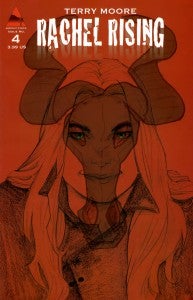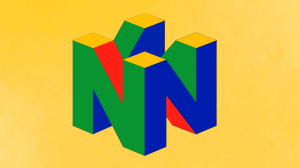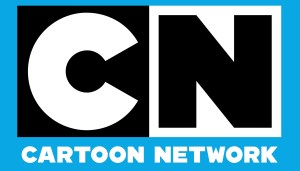Before we get into our discussion of Rachel Rising #4 this week, I wanted to touch base with writer/artist Terry Moore about the challenges of being a truly independent comics creator in today’s market. While anyone who doesn’t work for Marvel or DC has, to a certain extent, to hand-sell their books in order to subsist, guys like Terry—who literally operates his publisher as a family business and has no other creators working with him—are the ones who hare to worry the most about the threats of decreased foot traffic, digital piracy and other such threats to their business model. When asked by a fan today whether Rachel Rising was an ongoing title, Moore responded, “Depends. Retail orders are dropping.” In the days before Rachel Rising was released, Moore had talked to Panel Discussions about the challenges of the independent market, but now that the book has been on the shelves for about six months today’s comments seemed to be as good a time as any to reconnect about the challenges facing his title.ComicBook.com: Today you indicated on Twitter that orders have not been great at the retail level lately–how does the performance compare to Echo, roughly speaking?Terry Moore: I’d have to say it averages out to be the same. I’m hoping Rachel Rising will surpass my previous two series in sales. Trying hard on that.With guys like Jeff Lemire at DC and Brandon Graham at Image (not to mention a dozen other similar situations around the industry right now), it seems as though mainstream publishers are embracing the indie scene in a big way–at the same time independent publishers are increasingly finding it difficult to stay afloat. What do you think can explain that kind of dynamic?TM: Because it is becoming increasingly difficult to stay afloat on your own. Being an indy comic creator is like trying to get attention in the midst of a roaring Super-Bowl stadium. It helped when there was more of a movement to bring attention to the indies as a group. As an indy, my survival has depended on the attention and life-support of Diamond and retailers, both of whom are actually in another business that has nothing to do with me. They’re in the mainstream comics business. They have 3 major vendors and times are challenging and money is tight. An indy creator like me is just so off-the-map in their business. And who can blame them? When you get down to the business of comics, a book is a widget. What widget sells most, can we get more of that and how fast?Indy creators are in a different business. We make stories we love and sell them in modest numbers. We hope readers find them and pass them along to friends. We have no advertising except word of mouth. We make our little gems and try to catch somebody’s attention at the Super Bowl of mainstream because we really need retailers and Diamond, but they’re busy playing this vitally important game.What can fans do to help out? I mean, when Marc Andreyko’s Manhunter was canceled (for example), they had DC at which to aim a campaign of protest and request. When a great indie book is having trouble finding an audience, what does one do?TM: Find another outlet? I don’t know. My head hurts from banging it on that wall. I don’t have an answer. I believe Diamond has been as good to me as anyone could expect. They have stood by me all these years. Same with the major retailers; they know who I am; they carry my books. The small retailers—the ones who only order the Top 100 and don’t interact with the industry—I have to forget about them, they’re unreachable. But in terms of, can an indy creator make a name for himself in the midst of the mainstream game, the answer is yes. Can he get the machine to carry his widgets? Yes. For indy creators, the direct market problem isn’t respect, it’s numbers.The ordering machine may ask for 10 copies of issue #1. Then automatically orders less and less for each subsequent issue unless an act of God stops them or something wonderful happens, such as a large fan base builds quickly and loudly, convincing the machine to stop the slide and hold at the amount they’re at. Then the demand has to exceed orders consistently from then on, because to reverse the slide is a slow, cautious process. The machine doesn’t want any unsold widgets. If they order 10 and could have sold 30, they may order 13 next time and wait for proof that maybe they can go just a teenie bit higher next time. They have to read the demand against the future and try to decide how much of it will come into the store for the next issue, or wait for the trade.So a respected series can die for lack of numbers, or from a trade-waiting readership—no series, no trade.All that before we even broach the digital conversation and the effect it is having on the direct market machine that is still 90% of the pie. Or my pie, at least.
Videos by ComicBook.com










